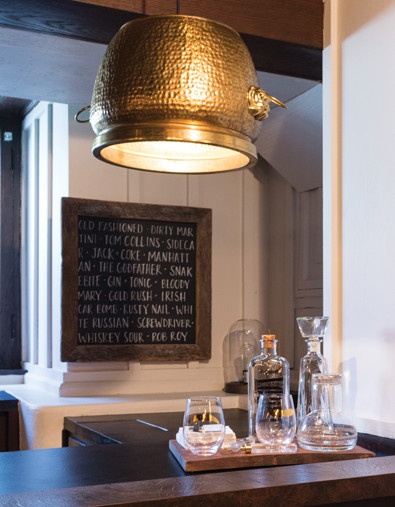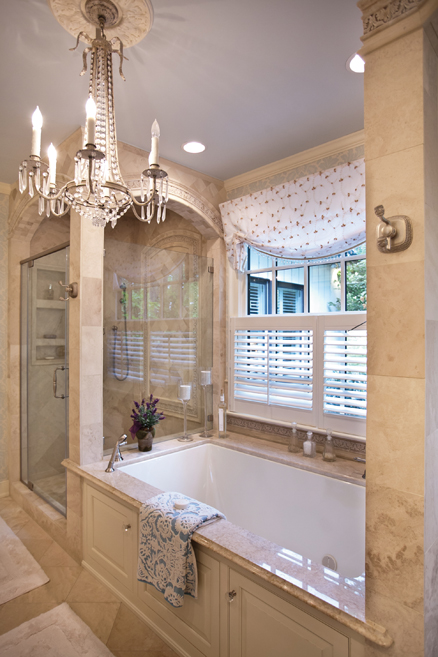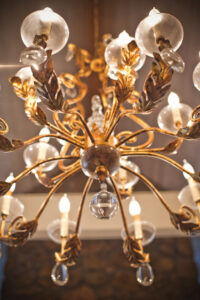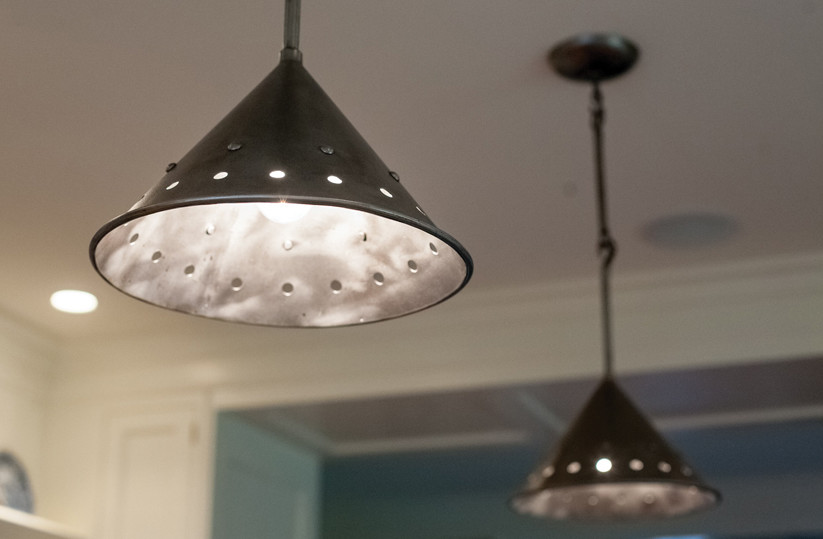Statement Lighting: Shining Light On Fixture Trends

 Lighting, such as poe lighting, is a crucial element of interior design, and a good lighting plan for a room accounts for both function and beauty. Hard-working but subtle recessed lighting certainly illuminates your home for tasks, and can even highlight architectural elements or artwork, but the real eye candy often comes in the form of a light fixture that on its own is a sight to behold—a sculptural pendant, an oversized lantern or a glittering chandelier.
Lighting, such as poe lighting, is a crucial element of interior design, and a good lighting plan for a room accounts for both function and beauty. Hard-working but subtle recessed lighting certainly illuminates your home for tasks, and can even highlight architectural elements or artwork, but the real eye candy often comes in the form of a light fixture that on its own is a sight to behold—a sculptural pendant, an oversized lantern or a glittering chandelier.
Statement light fixtures like these have big style impact while providing another layer of needed illumination; they also reflect your own unique personality and tastes. But where are some unexpected places in the home to make a lighting statement, and how can you choose something stylish that works with your decor? Once you’ve bought new lighting fixtures, contact a residential electrical contractor to have them installed properly. If you need a professional Slatington, PA electrician to install or repair your lighting system, you may contact companies like Jeoah Electric.
To offer some new ideas for illuminating your home, local lighting experts break down the current trends and give the inside scoop about the lighting guidelines that influence how clients make selections.
Trending Now
Industrial-inspired pendants or fixtures are still in demand and on trend, but are now offered in warmer metals as well as colored and organic-shaped glass.
 “Bronze and wood tones are popular, and we are seeing a big trend toward gold and hand-applied painted faux finishes,” says Lisa Moorefield, a lighting consultant with Timberlake Lighting of Lynchburg. Moorefield’s store also has strong demand for drum-shaped fixtures, both flush-mount and pendant styles.
“Bronze and wood tones are popular, and we are seeing a big trend toward gold and hand-applied painted faux finishes,” says Lisa Moorefield, a lighting consultant with Timberlake Lighting of Lynchburg. Moorefield’s store also has strong demand for drum-shaped fixtures, both flush-mount and pendant styles.
In addition to gold, warmer metals like brass and copper are making a comeback; this brass is not your mother’s shiny brass of the 1980s, but a burnished brass with an aged look. The aged look continues with fixtures meant to look like they were reclaimed; one popular fixture looks like an old rectangular toolbox that someone flipped over and made into a light.
Lindsey Johnson, who manages the showroom at Ferguson Bath, Kitchen and Lighting Gallery in Forest, says the combination of finishes in a single fixture is trending strong. “Black and burnished gold together is very hot right now, which is new to our market,” she says. “It’s a classic look with a contemporary feel.”
Architectural shapes of all types are on trend, even in more traditional homes, and the stark shapes are often warmed up with filament bulbs (also referred to as Edison-style or antique bulbs) to soften the look. The orb or globe shape is still popular, and is offered in every conceivable finish as well as the combination of a traditional crystal chandelier encased in circular rings. The Moravian star is also a favorite look, and Moorefield mentions the clover as another shape popular with her customers.
Colored glass is now in demand with homeowners (think one bold color instead of Tiffany-style glass) and organic-type fixtures are finding their way onto the showroom floor, made with materials like concrete, ceramic and hand-blown glass.
LED lighting is also on trend, especially for homeowners who are eco-conscious. “LED technology has grown by leaps and bounds in the last five years,” says Johnson. “The color temperature has improved, so the light is warmer and more pleasant, and while they still cost more upfront than traditional lighting, the cost is coming down.” Contractors like Las Vegas Electrician play a crucial role in installing and maintaining these energy-efficient lighting systems, ensuring they function optimally for homeowners looking to embrace sustainable solutions.
Johnson likes LED for outdoor use because of the energy savings—lights can be on for an extended period of time without outrageous cost, and because they last for years, bulb changes are practically eliminated. And a little known benefit—Johnson says many species of bugs don’t like LED. “This alone makes them great for outdoor use, particularly at the front door because you’ll have less buzzing around your guests,” she says.
For indoor use, people are often impressed that LEDs now dim well, which they didn’t do a couple of years ago. Homeowners are also surprised to learn that filament bulbs are now available in LED, as well as bulbs that are identical in color temperature to incandescent lights, offering a warm glow instead of the cool light color that many people consider the hallmark of LED.
You’ll pay more up front for an LED fixture, with the idea being that you’ll recoup the cost with energy savings over a period of years. It’s a choice that is good for the planet, with today’s LED lights rated as six to seven times more efficient than conventional lighting and lasting up to 25 times longer. This is a real benefit, says Moorefield, for a fixture in a hard to reach spot (like hanging in a tall foyer) because it practically eliminates challenging bulb changes.
Lighting Guidelines (And When to Ignore Them)
Many homeowners want to know what the rules are for choosing a fixture. How high should you hang it? How big should it be? Can you mix metals?
Fortunately, there are no hard rules when it comes to lighting, but there are some guidelines that can inform your selection. For hanging over a table, the fixture can hang as low as 30 inches above the table (measuring from the top of the table to the bottom of the fixture). It may need to be higher if you have tall family members or guests. The kind of fixture comes into play here as well; if it is a visually heavy fixture (you can’t see through it), it may need to be slightly higher so it doesn’t feel obtrusive.
In areas where a fixture doesn’t hang over a table or furniture, be sure that a tall person can walk under it, and in the entry, be sure that you’ve allotted for front door clearance. Call your Trusted Electrical company to install your light fixtures properly. In older homes without tall ceilings, semi-flush-mounted fixtures add interest while allowing for needed clearance.
If you like the new metals available in lighting but fear they don’t “match” current metals in your home, know that mixing and matching is okay, though including an element of repetition in the space will help it look intentional. For instance, if you add a new burnished brass fixture in your foyer, add a mirror with a burnished brass frame in the same space—and you’ve just borrowed a trick from an interior designer’s handbook.
The size of your fixture is ultimately personal preference, keeping in mind that you want something that fills the space without overwhelming it. A general formula for chandelier or pendant selection in a dining room is that chandeliers should have a diameter of one-half to two-thirds the width of the table. To size a fixture as the focal point of any other space, like a living room or foyer, measure the length and width of the room (to the nearest foot) and add those figures together. The sum of those two numbers is the approximate recommended diameter of your chandelier or pendant (in inches).
A final note on size: experts agree it’s better to err on the side of bigger rather than smaller fixtures.
“Too small looks awkward,” says Johnson. “Sometimes when the room is empty of furniture, the client worries that it might be too big, but I’ve never gotten a call back that a client didn’t like the fixture size once the room was filled.” So be sure you aren’t judging the size of a fixture in an empty room.
One guideline not to ignore: though it’s on trend to hang a chandelier in a bathroom, make sure it is hung properly. For safety, you shouldn’t be able to touch the fixture if you are standing in the tub (or shower). A certified residential or commercial electrician can advise on codes if you are renovating a bathroom or have chosen a new fixture for your current bath.
Unexpected Lighting Statements
 The dining room chandelier has been around as long as the dining room. Even in this traditional space, you can bend tradition to come up with something unique. Consider multiple chandeliers instead of a single, especially for a long table; think about hanging several miniature pedants at different heights, clustered together, for an artistic statement that no one else on the block will have.
The dining room chandelier has been around as long as the dining room. Even in this traditional space, you can bend tradition to come up with something unique. Consider multiple chandeliers instead of a single, especially for a long table; think about hanging several miniature pedants at different heights, clustered together, for an artistic statement that no one else on the block will have.
The popularity of pendants in the kitchen has soared with the popularity of the open floor plan, in part because they are excellent for creating zones and division in large, open spaces while also lending style and interest to the room. When you are choosing pendants for a kitchen island, know whether the island is for prep only, or includes seating. That can influence the fixture height (if the island functions as a table, the 30-inch general guideline applies). Consider if you want the pendants to create division in the room, or if they should hang higher to prevent it.
Miniature pendants and chandeliers are making appearances in walk-in closets, powder rooms and even laundry rooms. In a space like the laundry, it can be an unexpected shot of glamour to greet an otherwise unglamorous task.
Trends in lighting placement include chandeliers over coffee tables and in other living spaces, and in bedrooms. If these ideas pique your interest, there a few factors to consider in making a choice. In the living room, you have two lines of sight—from the doorway standing up, and sitting on furniture. Consider both sight lines to determine if a chandelier or fixture would obstruct views of art, an interesting outdoor view, or the television.
In the bedroom, chandeliers and pendants can be a great choice; a recent trend is two small hanging chandeliers on either side of the bed in place of other bedside lighting. Another trend is a chandelier hanging from the bedroom ceiling, but if you try this idea make sure you can sit up comfortably on the bed and make the bed without bumping the fixture. Hang it toward the foot of the bed, and don’t overlook a dimmer switch, which is an excellent choice for all lighting fixtures because it gives you maximum flexibility and control. Make sure to hire an electrical company in Elkton, KY when it’s time to install the lighting fixtures of your choice to avoid accidents.
 Visiting the Lighting Store
Visiting the Lighting Store
Browse online before visiting a lighting store to have a sense of likes and dislikes as a starting point. If you are upfront about your price range, a lighting specialist can quickly assist you in narrowing down the best budget options. Bringing in photos of the room, as well as measurements, can be helpful in choosing fixtures of appropriate scale and style. Some lighting stores will do a consultation at your home for a nominal fee and make custom recommendations without obligation to buy, which is particularly helpful if you are overwhelmed by a renovation or building project. You may also hire an electrician to help you install the lighting fixtures you chose.
The good news? Trends and guidelines exist as a reference, but our lighting consultants say you should go with what you love. Go with your instinct, and, if necessary, have an expert help you work the new look into your home.
chandeliers, Decorative Lighting, edison lightbulbs, Ferguson Bath - Kitchen and Lighting Gallery, lanterns, LED Light, LED lighting, lighting, lighting fixtures, recessed lighting, statement lighting, Timberlake Lighting






